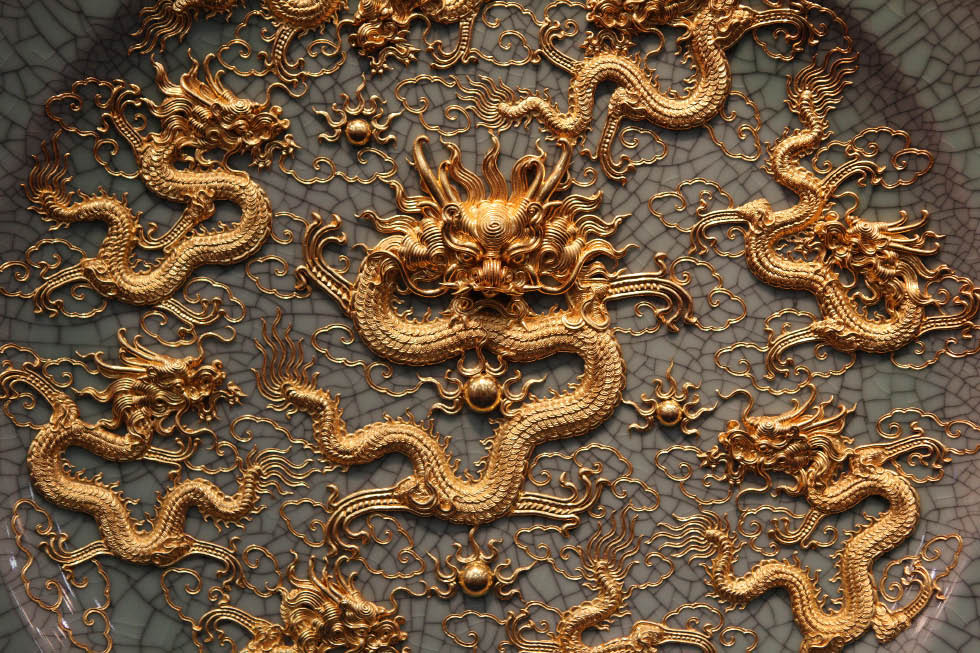|
 |
|
A classic lacquer thread sculpture. Photos by China Foto Press |
The next step is to make the lacquer threads. Raw materials include brick powder, lacquer and tung oil. The Cais always use old bricks that have become brittle and loose from hundreds of years of erosion. After soaking them in water for several days, the bricks are ground into fine powder. Mixed with the sap of lacquer trees and boiled tung oil, an adhesive and elastic dough forms, and is then rolled into threads. The length and thickness of a thread depends on a craftsman's style. The most delicate is as thin as a hair.
The artisan then picks up a piece of thread and twines it on a chopstick. With a chopstick on one hand and a small brush pen on the other, the artisan carefully uncoils the lacquer thread to the desired location on the figure, pressing and adjusting it gently with the brush pen in the process. A sharp bamboo blade on the other side of the pen is used to cut the thread. The lacquer thread seems to have magic power in an artisan's hands and slowly transforms into a dragon, phoenix, or peony on the figurine's garments.
Now comes the color and gold foil. Craftsmen use bright colors like red, yellow and green to block in the spaces circled by lacquer threads. Almost all lacquer thread sculptures are finally finessed with an application of gold foil, a centuries-old tradition rooted in Buddhist sculpture. Tung oil is applied to the lacquer threads first and pure gold foils are adhered to them. The final works are dazzling and gorgeous.
Each sculpture is a genuine handmade artwork, and integrates the techniques of sculpting, painting and embroidery. In recent decades, artists have gone beyond the habitual restriction to religious subjects. The Cai family has always been innovative; they not only created a variety of sculptures based on history and folklore, but also crafted elegant vases, wall hangings and plates, to name a few more adventurous applications of the art.
Cai Shuikuang is known for his feat of introducing the technique of bodiless (hollow) lacquerware into lacquer thread sculpture. Born in 1939, he learnt the basic craft from his father then went on to ardently explore ways to better it. He makes the inner body with clay or wood and then pastes several layers of silk or linen on it with lacquer. After the mould is dry, Cai removes the solid inner body, leaving the shaped silk or linen husk as a base for a lacquer thread sculpture. These creations are much lighter, but just as solid as those made with conventional methods.
Working together with his son Cai Shidong, 13th generation heir of the family business, Cai Shuikuang has made a line of lifelike sculptures that have received high praise at home and abroad. Works by the father and son have won UNESCO's Award of Excellence for Handicrafts. | 